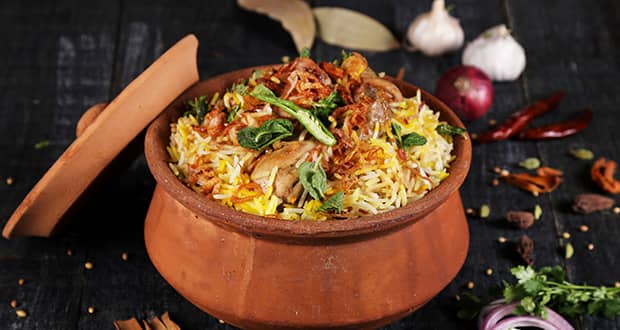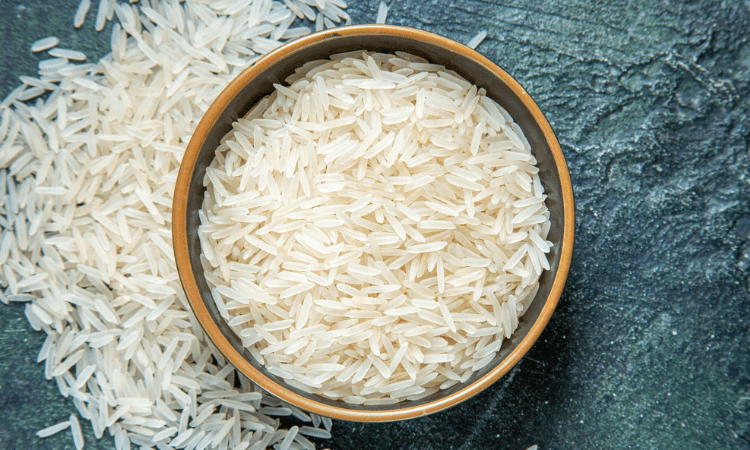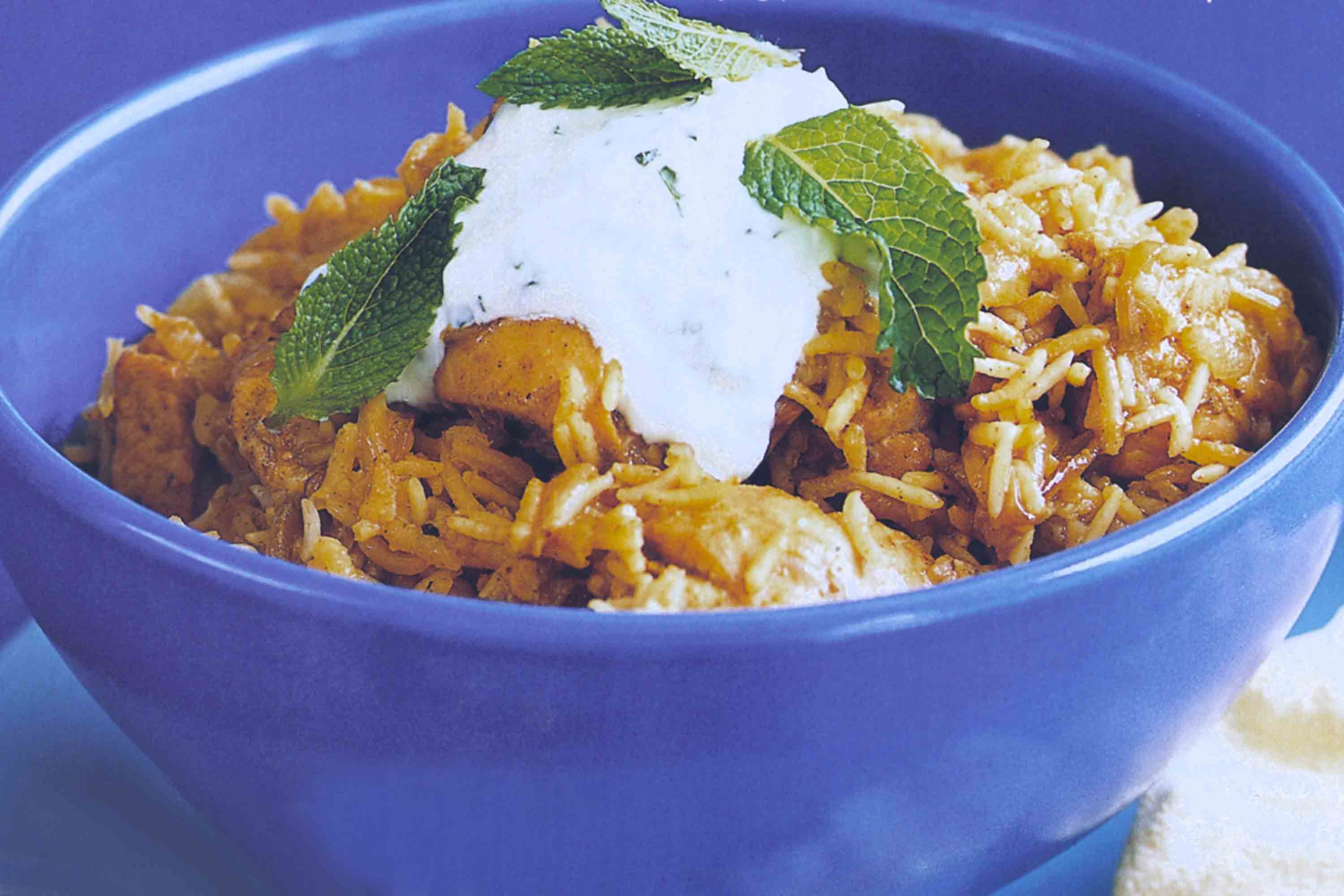Content Writer | Posted on | food-cooking
Which rice is good for Biryani?
| Posted on
Biryani is one of the most loved dishes in the country of India. Each region has their own version of this dish and each version is as tasty as the previous one. One of the most key ingredients which makes biryani taste the way it does is the rice. Having the right kind of rice is what makes biryani tasty. When making biryani, one can use 5 kinds of rice:
- Jeera Samba
- Sona Masuri
- Patna Rice
- Ully Rice
- Basmati Rice
Even though all these 5 kinds of rice are used to make biryani, if you want the best biryani, which is full of flavor and the grains of rice are all separate and each grain has a bite to it, then the only type of rice you should use is Basmati Rice. Basmati Rice complements the spices and the flavors of the biryani and also adds a delicate, nutty flavor which makes that kind of biryani the best kind.
Hope this helps.
Image Courtesy: Google

0
0 Comment
| Posted on
When making Biryani, the type of rice you choose is crucial for achieving the right texture and flavor. Basmati rice is the most popular choice for making Biryani. It is a long-grain rice known for its aromatic fragrance, slender grains, and fluffy texture. Basmati rice imparts a unique and delightful aroma to Biryani. You can find various brands of Basmati rice in the market, Star Rice is one of such brand which is famous for basmati rice producers in India.

Also Read :- Can I eat rice at night?
0
0 Comment
| Posted on
With regards to setting up a flavorful biryani, picking the right rice is vital to accomplishing the ideal surface, fragrance, and by and large taste. There are a few kinds of rice normally utilized in biryani, each offering its own special qualities.
1. Basmati Rice: Basmati rice is broadly viewed as the best decision for biryani. Known for its long, thin grains and particular fragrance, basmati rice concocts cushy and discrete, making it ideal for layered dishes like biryani. It ingests enhances well and gives a magnificent fragrant quintessence to the dish. The grains stay firm and don't get excessively tacky, giving the biryani an outwardly engaging show. Whether you decide on white or matured basmati rice, both can function admirably in various sorts of biryani.
2. Sela/Parboiled Rice: Sela rice, likewise called parboiled rice, is to some extent cooked with the husk prior to going through additional handling. This outcomes in grains that are firmer and less inclined to remaining together contrasted with ordinary white rice. Sela rice is a famous decision for biryani as it keeps up with its shape well during cooking, with each grain remaining discrete and offering a charming surface to the dish.
3. Jeera Rice: Jeera rice, otherwise called cumin rice, is seasoned with cumin seeds during cooking, which adds an inconspicuous yet unmistakable taste. However basically utilized as an independent dish, jeera rice can be used as a base for veggie lover biryani or biryani varieties that advantage from the natural kind of cumin. The grains of jeera rice will generally be more limited and plumper contrasted with basmati or sela rice.
4. Gobindobhog Rice: Gobindobhog rice is a fragrant, short-grain rice fundamentally developed in West Bengal, India. While it isn't as normal in conventional biryani, it can confer a wonderful fragrance and give a novel bend to the dish. Gobindobhog rice concocts delicate, soggy, and somewhat tacky, making it reasonable for biryani varieties that require a stickier surface.
5. Kalijeera Rice: Kalijeera rice, otherwise called child basmati, is a little grain sweet-smelling rice principally filled in Bangladesh. It is profoundly valued for its particular flavor and fragile fragrance. While Kalijeera rice isn't normally utilized in conventional biryani recipes, it very well may be integrated into specialty biryanis that emphasis on its particular taste and aroma.
Eventually, the decision of rice for biryani relies upon individual inclination and the particular recipe you are following. Basmati rice, with its unmistakable smell, stays the famous and conventional decision for most biryani arrangements, however varieties are normal, displaying the territorial variety and culinary inventiveness related with this darling dish.
Make sure to wash the rice completely prior to cooking to eliminate abundance starch and upgrade its stoutness and partition. Likewise, the cooking technique assumes a critical part in accomplishing the ideal surface and flavor, so adhere to the guidelines cautiously or allude to confided in biryani recipes.
Trying different things with various rice assortments can add fervor and uniqueness to your biryani manifestations. Partake during the time spent investigating different rice choices and appreciate the brilliant kinds of this cherished dish!
.jpeg)
0
0 Comment
| Posted on
Basmati rice is the most commonly used and recommended type of rice for making Biryani. Basmati rice is a long-grain rice variety known for its fragrance, flavor, and slender grains. These qualities make it an ideal choice for Biryani because it allows the grains to remain separate and fluffy while absorbing the aromatic spices and flavors of the dish. When making Biryani, it's important to use good-quality Basmati rice for the best results. Look for aged Basmati rice, as it tends to have better texture and aroma. You can find various brands of Basmati rice in the market, and some may be labeled specifically for Biryani like Nature pearls Organic.

0
0 Comment
| Posted on
The choice of rice for biryani primarily depends on regional traditions and personal preference. The two most common types of rice used for biryani are:
1. Basmati Rice: Long-grain and aromatic, Basmati rice is popular in North Indian and Mughlai biryanis, known for its distinct grains and fragrance.
2. Seeraga Samba Rice (Jeerakasala Rice): Short-grain and aromatic, Seeraga Samba rice is commonly used in South Indian biryanis, prized for its flavor and ability to absorb spices.
Other rice varieties, such as long-grain or short-grain rice, may be used in regional variations. The choice of rice depends on the specific biryani recipe and personal taste preferences. Proper washing and soaking of the rice are essential for achieving the desired texture and flavor in the biryani.

0
0 Comment
